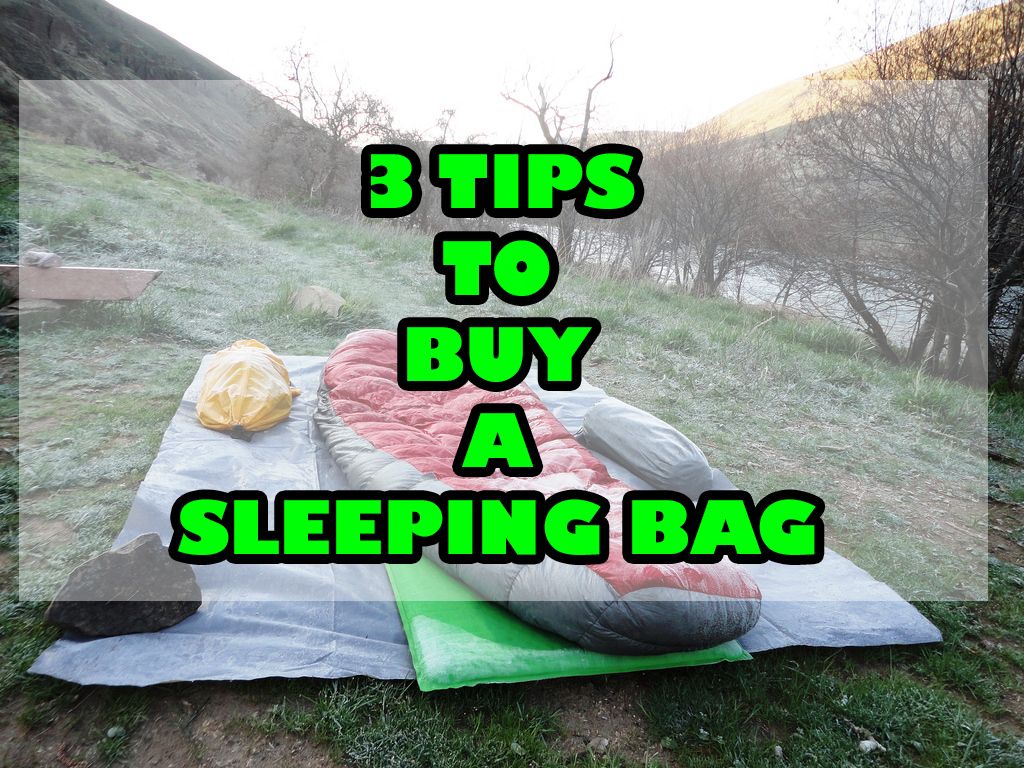Live Outdoors: 3 TIPS TO BUY A SLEEPING BAG
Hello once again fellow adventurers!!! Let's talk about SLEEPING BAGS and how to choose one following this simple rules.

This is, amongst other essential equipments, the one that I get asked more often by my friends. And I understand why.
Sleeping bags are generally not very cheap, there are many different types and brands that you can choose from, they are rated for various temperatures, they'll keep you happy while sleeping, they keep you alive in extreme conditons and if you are careful enough they'll last some years. Try being a beginner and puting all that information together, it's quite possible that you'll get confused, as I do sometimes too.
If you are a total begginer you may want to check this post about the "3 Essential items for camping"
Note: I'll not focus on discribing all the types of sleeping bags or this post will be gigantic. As you saw on the post about "Essentials" I said that syntethic sleeping bags are the most common ones. The "rules" can be applied for Down bags (goose feathers). If you want to know the differences between Down and Synthetic, please stay tunned for an upcoming post.
Without further ado, Let's get started.
1. KNOW WHERE YOU ARE GOING - SIMPLE RULE
The first thing I advise is the knowledge of where you are planning to go. Unfortunately there isn't a sleeping bag for all situations. You'll not be able to sleep in the hot brazilian summer using a winter bag (rated for negative temperature), even if you just cover with it, and you'll possibly freeze during the summer in Patagônia (it's usually below 0ºC) using a brazilian summer sleeping bag (rated for positive temperatures).
Before buying your sleeping bag, take some time to analyse the places you plan to use it and answear yourself this questions:
- Will I use mostly in the winter or summer? Am I going to Alaska or Central America?
- What are the average seasonal temperatures for those places?
*Remember that, in the Tropical zone, temperature tend to remain hot all year round and the more to the poles you go the more variance will occur.
*If you are in a Subtropical climate it's quite possible that you'll need two sleeping bags. One for summer and one for winter.
So, for the simple rule you should decide on the temperature you are mostly to encouter during the night and make it 5-10ºC worse.
Ex.: I live in a subtropical zone, temperatures here vary from 0ºC in the winter to 35ºC in the summer. For the winter I have a -5ºC sleeping bag (0-5=-5) and for the summer I usually only carry a light cover. That same sleeping bag I use in Patagonia during the summer, since the winter in Patagonia can go all the way down to -10ºC, I'd freeze.
Do you get the logic? This is simple.
2. Sleeping Bag Temperature Rating
Ok, now that you've decided the temperatures you are going to face is time choose your sleeping bag.
For that there is one guide you can follow:
- European Standard - EN 13537
This criterion has been designed to standardize the temperature ratings on sleeping bags manufactured or sold in Europe.
The EN 13537 is followed through tests in laboratory using a thermal manikin, assuming that the subject is using a sleeping pad, tent and is wearing one base layer of thermal underwear.
Also it's important to mention that, for these measurements, a "standard man" is assumed to be 25 years old, with a height of 1.73 m and a weight of 73 kg; a "standard woman" is assumed to be 25 years old, with a height of 1.60 m and a weight of 60 kg.
The label on EN 13537 sleeping bags will state 3 measures for temperature ratings:

- Comfort — the temperature at which a standard female can expect to sleep comfortably in a relaxed position.
- Lower Limit — the temperature at which a standard male can sleep for eight hours in a curled position without waking.
- Extreme — the minimum temperature at which a standard female can remain for six hours without risk of death from hypothermia (though frostbite is still possible).
3. IMPORTANT NOTES
- Never choose a sleeping bag based on the extreme temperature labeled by the EN 13537 on the sleeping bag.
- If you are a woman, use as reference the COMFORT TEMPERATURE and if you are a man use the LOWER LIMIT temperature. Always remember to give some tolerance as followed by our SIMPLE RULE 1.
- Always verify when buying if your sleeping bag follow the European Standard - EN 13537. It should have it labeled on the sleeping bag.
3.1 PHYSICAL FACTORS INFLUENCING WARMTH/COLD SENSATION
- Metabolism: Heat production by your body depends on (Age, Gender, Weight and Psychophysical conditions)
- Mass: Your body fat influences your capacity to hold heat. The more body fat the more heat you'll hold, hence feeling less cold.
- Age: An old person generally produces less heat than a young one, thus feeling more cold.
- Gender: Normally woman feel more cold than man.
- Experience: People who live in cold places usually have a better resistance to low temperatures, thus feel less cold. The same apply for people who are used to being outdoor, those generally have a better understanding on how to find the best place to set a tent and organize the "bed".
- Physical Condition: Physical stress on a sedentaty person may directly impact its energy. Energy plays an important part on producing body heat. A sedentaty person with physical exaustion feels more cold than a person that is prepared.
3.2 TIPS
For a better night you'll not only depend on the sleeping bag, but also on the surface you are and how you sleep.
- Use a thermal mat: If you don't know what that is, please check this post.
- Thermal sensation: Remember that thermal sensation is directly impacted by environmental exposure. Factors such as wind, air humidity and density will play an important role. It's advisable to use a tent to protect from the elements.
- Never sleep on wet clothes: It's better to sleep naked than in wet clothes, heat conduction through wet clothes will be greatly increased.
- Right nutrition: Your sleeping bag will not generate heat, it'll only hold the heat produced by your body. In order to produce body heat you need the right balanced nutrition, eating something hot before bed is very important.
- Hydration: Keep your body hydrated.
- Extra Clothes: If you are feeling cold put on extra clean and dry clothes.
- Protect your sleeping bag: Always protect your sleeping bag from humidity. You can use a simple plastic bag or you can buy dry sacks to store your sleeping bag when going to your adventure.
CONCLUSION
As always my friends, in this world of adventure your budget is the limit. Once you have choosen what you need in terms of temperature you can start cutting your options based on your budget.
PLEASE keep in mind that a sleeping bag in cold situations will mean your safety, so don't go extremely cheap on this.
If the brand you have choosen does not follow the EN 13537 the only guide you'll have is the trust. If that's the case take your time and read user reviews on the internet, keep in mind all the factores stated on this article to make your own conclusions
Obs.: All images were generated using free sources and edited by @mrprofessor
References
European Standard EN 13537: https://en.wikipedia.org/wiki/EN_13537
Title Image:StockSnap on https://pixabay.com
I hope I achieved my objective of giving you a starting point to choose a sleeping bag to go live outdoors, if you need any recommendations or like this article please feel free to upvote and leave a comment down below.

@originalworks
The @OriginalWorks bot has determined this post by @mrprofessor to be original material and upvoted it!
To call @OriginalWorks, simply reply to any post with @originalworks or !originalworks in your message!